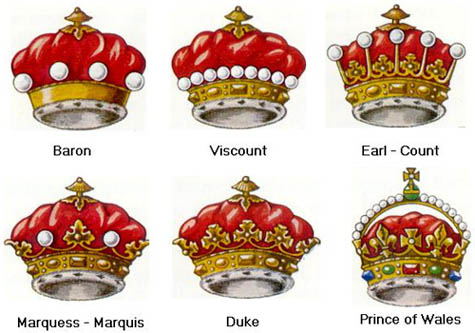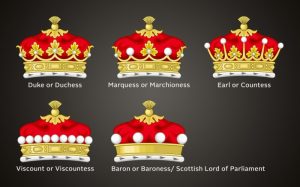Understanding The Earl Rank: A Deep Dive Into British Nobility
The world of British aristocracy is a fascinating tapestry woven with centuries of history, tradition, and a complex hierarchy of titles. From dukes to barons, each rank carries its own unique story and significance. Among these esteemed positions, one stands out for its ancient lineage and pivotal role: the Earl. Often misunderstood or overshadowed by the more prominent Duke, the Earl holds a remarkable place in the annals of English peerage. But what exactly does it mean to be an Earl, and how has this title evolved over time?
Join us as we unravel the mysteries of the Earl rank, exploring its origins, its position within the British nobility, and the intriguing history that shaped its prestige.
What Exactly is an Earl?
At its core, an Earl is a member of the British peerage, holding a specific position within a meticulously structured social ladder. To truly grasp the significance of this title, it's essential to understand where it stands in relation to other noble ranks.
The Peerage Hierarchy: Where Does an Earl Stand?
The British peerage system, a noble hierarchy known for its five distinct ranks, is ordered in descending prestige as follows:
- Duke: The highest rank, often associated with significant landholdings and immense power.
- Marquess: A rank introduced later, typically positioned between a Duke and an Earl.
- Earl: The third highest rank in the British peerage.
- Viscount: Standing below an Earl, this title also emerged later in history.
- Baron: The lowest rank of the nobility, often granted smaller parcels of land.
As you can see, the Earl occupies a significant position, standing above the ranks of viscount and baron, but directly below duke and marquess. This placement underscores its historical importance and continued prestige within the aristocratic framework.
Earl vs. Count: A Transatlantic Connection
For those familiar with continental European nobility, the term "Earl" might seem unique to Britain. However, the rank of Earl actually corresponds directly in rank to the Continental "Count." While the name differs, the social standing and historical function are largely analogous. This parallel highlights the shared aristocratic traditions across Europe, even as specific titles evolved differently in various regions.
Tracing the Roots: The Ancient Origins of the Earl
One of the most compelling aspects of the Earl title is its incredible antiquity. It is not merely an old title; it is the oldest title within the English peerage, tracing its origins back to a time long before many of the other noble ranks even existed.
From Jarl to Eorl: A Scandinavian Legacy
The word "Earl" itself offers a fascinating glimpse into its ancient roots. Its origins can be traced back to Scandinavia, specifically from the Old Norse word "jarl." This term was used to denote a chieftain or a high-ranking nobleman. As Scandinavian influence, particularly through the Viking Age, spread to Anglo-Saxon England, the term evolved. "Jarl" became "eorl" in the Anglo-Saxon language, eventually transforming into the "Earl" we know today. This linguistic journey underscores the deep historical connections between early England and its Nordic neighbors.
The Highest Rank (Once Upon a Time)
Before the titles of Duke and Marquess were developed and formalized in the English peerage, the Earl held the paramount position among the nobility. It was, in essence, the highest rank after the King himself. This historical prominence means that for centuries, Earls were the most powerful and influential figures in the realm, second only to the monarch. This status endured until the creation of the dukedom, which subsequently pushed the Earl down to the third position in the hierarchy. The earliest recorded use of the title dates back to the Anglo-Saxon period, solidifying its claim as the oldest title in the British peerage system.
The Life of an Earl: Power, Privilege, and Limitations
While the title itself conveys a certain prestige, the actual power and lifestyle of an Earl have varied significantly throughout history. By the 13th century, for instance, Earls held a social rank just below the king and princes. However, this high social standing didn't always translate directly into superior power or wealth compared to other noblemen.
Beyond Just a Title: Land and Influence
Historically, titles were intrinsically linked to landholdings and the influence they conferred. Earls, by tradition, were granted larger land holdings than barons, who typically received smaller parcels. Dukes, being the highest rank, held the largest estates. This connection between title and territory meant that an Earl, while not always the wealthiest nobleman, certainly commanded significant resources and local authority through their extensive lands.
The Path to Becoming an Earl: Inheritance and Marriage
Unlike some positions that could be earned through military prowess or political service, becoming an Earl was a highly restricted affair. The only conventional ways to acquire the title were through:
- Inheritance: The most common method, where the title passed down through the family line, usually to the eldest son.
- Marriage: Marrying into a family that held the earldom could, in certain circumstances, confer the title or its privileges.
However, even these avenues were not entirely automatic. The King reserved a crucial right to prevent the transfer of a title, ensuring that the monarch maintained ultimate control over who held such powerful positions within the realm. This royal prerogative served as a check on the potential accumulation of too much power by a single noble family.
The Countess: The Earl's Counterpart
It's worth noting that while "Earl" is a distinctly masculine title, the wife of an Earl holds her own noble designation: a "Countess." There is no feminine form of "Earl," making "Countess" the appropriate and traditional title for the Earl's spouse, mirroring the Continental "Countess" as the wife of a "Count."
The Evolution of the Earl Rank in Modern Times
While the days of Earls wielding immense feudal power are largely in the past, the rank continues to exist within the modern British peerage system. Its role has shifted from direct governance to a more ceremonial and traditional one, though peers still hold certain privileges and responsibilities, particularly within the House of Lords.
Symbols of Status: Coronets and Robes
The visual representation of rank has always been important in nobility. For peers, this often involved specific attire, including coronets (small crowns) and ceremonial robes. Interestingly, by 1953, a notable change occurred regarding the dress of peers. Those under the rank of an Earl were allowed to wear a cheaper "cap of estate" in place of a full coronet. Similarly, peeresses of the same rank were permitted to wear a simpler robe. This subtle shift reflects the evolving nature of aristocratic traditions, perhaps making ceremonial wear more accessible or less ostentatious for lower ranks.
The Enduring Legacy
Today, an Earl remains a member of the British peerage, holding a distinguished position below a Marquess but above a Viscount. The title continues to be passed down through generations, embodying centuries of history and tradition. While their political power has diminished significantly since medieval times, Earls still contribute to the cultural fabric of Britain, often involved in charitable work, heritage preservation, and public service, maintaining a connection to a storied past.
Final Thoughts
The Earl rank is far more than just a historical footnote; it is a living testament to the enduring legacy of British nobility. From its ancient Scandinavian roots as the highest title in England to its current position as the third highest in the peerage, the Earl has witnessed and shaped centuries of history. While the paths to becoming an Earl were limited to inheritance or marriage, and their power relative to the King has fluctuated, the title consistently represented a significant level of social standing, land ownership, and influence. Understanding the Earl is key to appreciating the intricate and fascinating world of the British aristocracy, a system that continues to captivate and intrigue.

What are Royal British Nobility Titles in order? What is the rank?

Victorian Baroness and baron Meaning, Barons of The Victorian Age

British nobility | Ranks, Titles, & Peerage System | Britannica